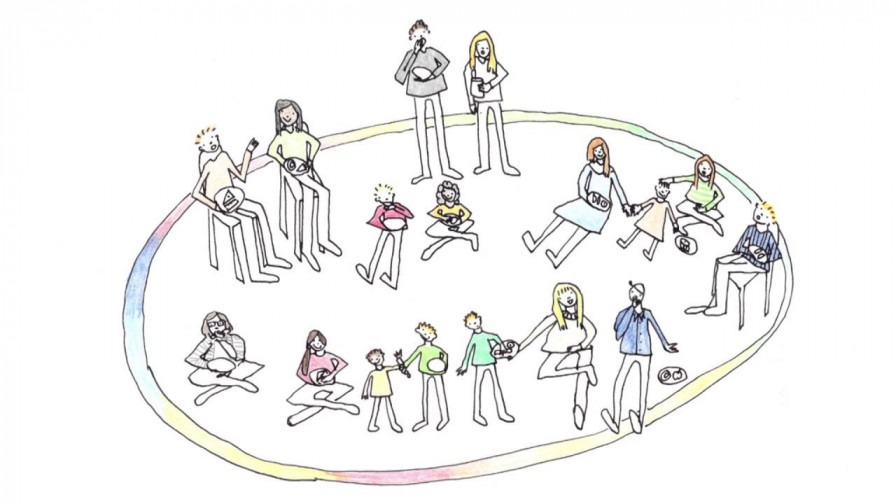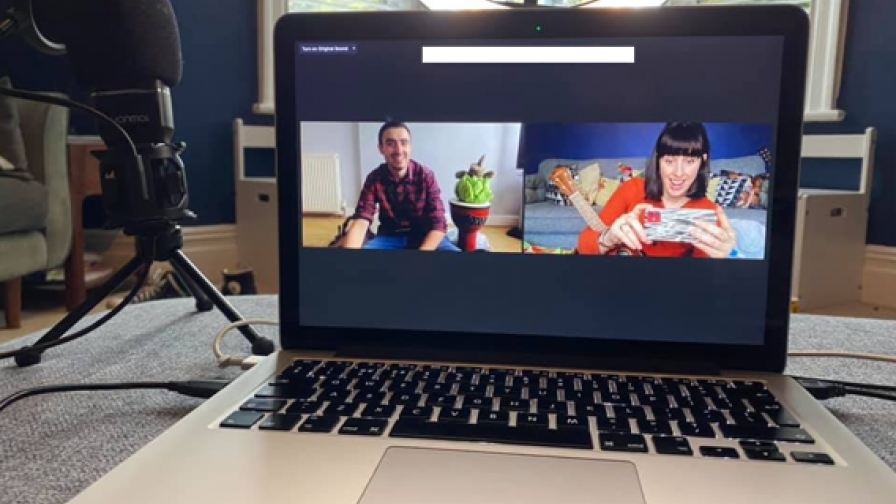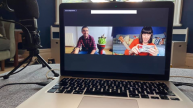Digital Music-making with children in care

In this blog post, Ryan Humphrey (Project Leader for Loud and Clear Early Years & PhD Researcher at York St John) will outline how a music programme working with children in the care system has been redeveloped during the COVID-19 pandemic.
Loud and Clear Early Years is a Sage Gateshead Youth Music funded programme working with children in care between the ages of 0-7 years old and their key adult. The programme was established in 2012 has gone from strength to strength. There are three different strands of work:
- Loud and Clear Foster Family Music-Making - working with children aged between 0-5 and their foster carers
- Loud and Clear Adoptive Family Music-Making - working with children aged 0-5 and their adoptive parents
- Loud and Clear ‘Move on Up!’ - working with adopted children aged 5-7 and their parents
The work on the programme has been developed and sustained thanks to the partnerships that we have built with local authorities: Newcastle and Gateshead Foster Carer Services and Adopt North-East. These partnerships have been crucial to the work of Loud and Clear - supporting family engagement and helping Sage Gateshead consider the potential impacts of our work. Further information on the history of the programme can be found on the following link: https://www.inspire-music.org/case-studies/66-loud-and-clear-early-years
Similar to many other organisations and programmes, during the height of COVID-19, Loud and Clear stopped all face-to-face working and began developing an online model. We understand the impact and importance that this work has for the young people and families we engage with and felt it was vital we find a way to engage people digitally.
In this blog post, Ryan will consider some of the critical steps that we have taken to support development of the online model, while also reflecting on the last term. It is hoped that these insights may prove useful for others looking to undertake similar sorts of work or may open up further discussions on other organisations/practitioner’s experience of online working.
Choosing the Right Platform & Reigniting our partnerships
One of the main things we had to consider through the process of re-developing our work was identifying the most suitable digital platform. There are numerous platforms that each come with positives and negatives regarding accessibility and technological features.
Our work with local partners was crucial during this period; they informed decision-making in this set-up phase as they had contextual information of the families we were hoping to reach, alongside information about the platforms they were using to access different services. We took four primary considerations into account:
- Accessibility - it had to be a platform that carers or adoptive parents could access;
- Ease of use - facilitators and participants needed to be comfortable using the platform;
- Security features - it was essential we met safeguarding requirements of the participants and Sage Gateshead;
- Ability to host musical input- the platform needed to host the instruments and sounds being created by the group.
Through discussion with partners, it became apparent that participants were most familiar with Zoom. As such, we began developing our work to move onto this platform; partners played a crucial role in helping advertise the sessions to potential participants.
When the programme began, partners were really supportive in contacting carers and adoptive parents to assist in helping them access sessions on the day, and many of our partners have even dropped into sessions to see and take part in the music-making that was happening! These partnerships have always been critical to our work on the Loud and Clear programme, but their importance increased during the move online.
Co-facilitation
Across all three programme strands, two musicians are employed to run the sessions. This is for two primary reasons; one being that having an extra musician helps facilitators to offer more support to families where needed within the space. The other is that it creates a source of continuation and routine - if one musician was unable to run a session, a familiar face is still there within the space. This is critical for supporting this demographic who may often lack continuation and routine within their lives.
We have always had two musicians on the programme - co-facilitation is embedded within the practices of the musicians. The move to online working raised questions on co-facilitation and what that might look like in the space.
Through trial and error, we found that one of the best ways of co-facilitating was to develop a session outline with each of us taking on specific moments of leading. In contrast, the other musician would take on a support role of doing actions for songs or helping monitor participants engagement and interactions. This supportive role was particularly useful when doing song-writing with animals where one musician could continue playing the melody, while another musician did the actions or brought in an animal for all participants to look at on the screen.
If we feel that activity has run its course, we can use the private messaging function on zoom to send one another a message to suggest we move onto something else or change the structure to accommodate the participant's engagement or interactions at that point in time. Although we are rarely unmuted at the same time seeing another musician supporting your work provides a sense of comradery.
Participant's voice
One of the cornerstones of our face-to-face sessions was the opportunity for participant input into the session. Our pedagogical approaches are centred around supporting participants to make decisions on the songs we sing, the instruments we play and how we dance and move around the room. In face-to-face sessions, this can be a challenge, with new children in the session often shying away from the opportunity to input or lacking the confidence to interact with unfamiliar faces. Approaching online working, we felt unsure of how and if we could include participants voices into the session, due to the challenges caused by the time lag between participants.
Across all three sessions, we experimented in different ways to include participants voices. This ranged from asking carers and parents to use the chat function to provide ideas for songs to offering participants opportunities to unmute themselves and speak directly to us. We have found that the time lag that comes from digital sessions can be a useful and creative tool, particularly when playing instruments together. We often offer participants the opportunity to 'unmute' themselves and play their instruments, and it is great seeing the 'Yellow' box moving through the participant's boxes on the screen as we hear each different family playing their instrument. Similarly, when engaging in song-writing with the group, we have found that even asking participants to show their cuddly toys on the screen can be a source of input for the young people that helps them contribute to the development of the session.
Finding ways to have the participants input into the session has been critical within our digital development for making sure that the work that we are doing is being created with the participants. By being able to support participants to input ideas, the work remains impactful and meaningful – we have also seen a steady increase in the confidence of participants over the nine weeks.
Concluding Remarks
Reflecting on the last term of Loud and Clear, it is fantastic to see the way that we have re-developed and moved our programme to an online model where we can engage our families and give support when they need it the most. We have been able to re-develop and strengthen our practices and understanding of the work that we do through the process as well as strengthen our partnerships. We look forward to the next term of Loud and Clear and seeing where the work can take us next!



